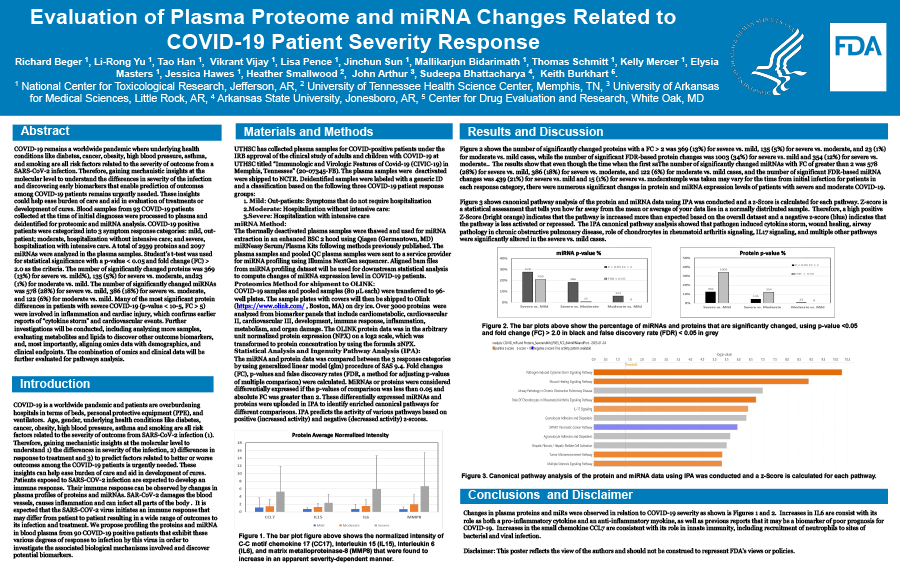2023 FDA Science Forum
Evaluation of plasma proteome and miRNA changes related to COVID-19 patient severity response
- Authors:
- Center:
-
Contributing OfficeNational Center for Toxicological Research
Abstract
COVID-19 remains a worldwide pandemic where underlying health conditions like diabetes, cancer, obesity, high blood pressure, asthma, and smoking are all risk factors related to the severity of outcome from a SARS-CoV-2 infection. Therefore, gaining mechanistic insights at the molecular level to understand the differences in severity of the infection and discovering early biomarkers that enable prediction of outcomes among COVID-19 patients remains urgently needed. These insights could help ease burden of care and aid in evaluation of treatments or development of cures. COVID-19 positive patients were categorized into 3 symptom response categories: mild, out-patient; moderate, hospitalization without intensive care; and severe, hospitalization with intensive care. Blood samples from 93 COVID-19 patients collected at the time of initial diagnoses were processed to plasma and deidentified for proteomic and miRNA analysis. A total of 2939 proteins and 2097 miRNAs were analyzed in the plasma samples. Student’s t-test was used for statistical significance with a p-value < 0.05 and fold change (FC) > 2.0 as the criteria. The number of significantly changed proteins was 369 (13%) for severe vs. mild%), 135 (5%) for severe vs. moderate, and23 (1%) for moderate vs. mild. The number of significantly changed miRNAs was 578 (28%) for severe vs. mild, 386 (18%) for severe vs. moderate, and 122 (6%) for moderate vs. mild. Many of the most significant protein differences in patients with severe COVID-19 (p-value < 10-5, FC > 5) were involved in inflammation and cardiac injury, which confirms earlier reports of “cytokine storm” and cardiovascular events. Further investigations will be conducted, including analyzing more samples, evaluating metabolites and lipids to discover other outcome biomarkers, and, most importantly, aligning omics data with demographics, and clinical endpoints. The combination of omics and clinical data will be further evaluated for pathways analysis.

